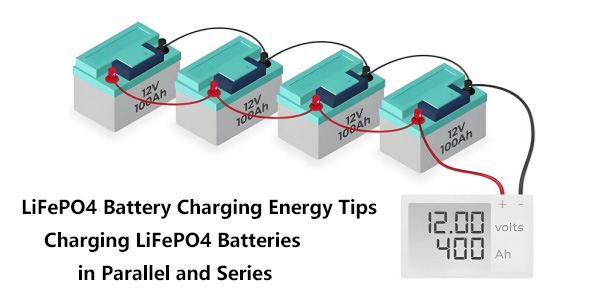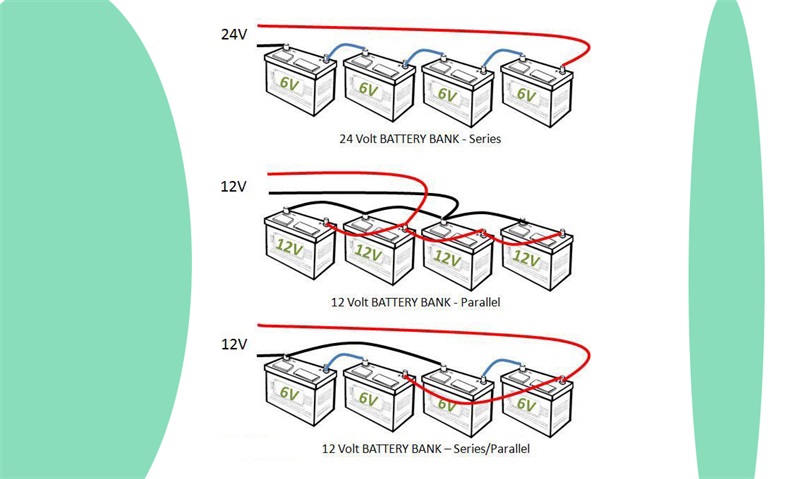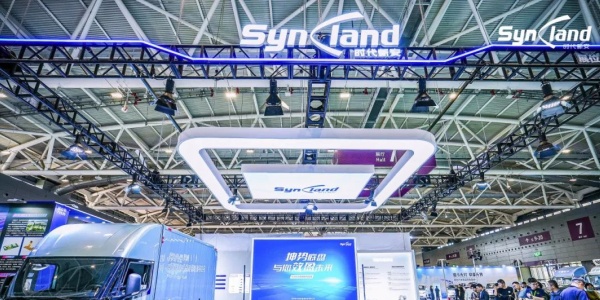LiFePO4 Battery Charging Energy Tips: Safety Guidelines for Charging LiFePO4 Batteries in Parallel and Series
In the previous article, we discussed whether charging LiFePO4 batteries to 100% is harmful to the battery. The result is clear: frequent full charges can affect the battery's lifespan. To help you better experience the excellent performance of our LiFePO4 battery products, today we will continue to explore other safety charging issues related to LiFePO4 batteries: safety guidelines for parallel and series charging of LiFePO4 batteries.
As usual, let's first take a look at the main characteristics of LiFePO4 batteries and the three charging methods for LFP batteries. This will help us better understand the subsequent content.
LiFePO4 Battery Key Characteristics
· Safety: They are inherently safer due to the stable chemical structure and high thermal stability.
· Longevity: LiFePO4 batteries typically have a longer lifespan compared to other lithium-ion batteries, with a high number of charge-discharge cycles.
· Performance: They offer high power density, making them suitable for applications requiring quick discharge rates.
LiFePO4 Battery Three Methods of Charging
· Constant Current Charging: This method maintains a consistent charging current throughout the entire charging process. It is straightforward to use and easy to calculate the charging power. However, as the charging progresses, the battery's ability to accept current decreases, especially in the later stages. As a result, the efficiency of current utilization diminishes significantly.
· Constant Voltage Charging: In constant voltage charging, the voltage is kept steady during the process, and the charging current adjusts automatically. If the set voltage is appropriate, this method can fully charge the battery while minimizing gassing and water loss. However, its drawback is that it doesn't provide an accurate reflection of the battery's overall charging status. Additionally, if the current is too high, it may cause damage to the battery.
· Constant Current & Constant Voltage (CC/CV): This method is the most recommended for LiFePO4 batteries. It begins by supplying a constant current until the battery voltage reaches a specified threshold. Once this voltage is achieved, the charger switches to constant voltage mode, and the current gradually decreases to a low level. This dual approach ensures a more efficient and safe charging process for these batteries.
LFP Battery Three-stage Charge
· Pre-Charge Stage: In this stage, the charger delivers a small, continuous trickle charge to the battery. This low current helps protect the LiFePO4 batteries and contributes to extending their overall lifespan.
· Constant Current (CC) Stage: During this phase, the charger provides a steady current to the battery. The current level is usually determined by the battery's capacity, commonly ranging from 0.2C to 0.5C (where C represents the battery's capacity in ampere-hours).
· Constant Voltage (CV) Stage: Once the battery reaches a predetermined voltage level (typically around 3.6V per cell), the charger switches to constant voltage mode. At this point, the charger maintains a fixed voltage while the charging current gradually decreases as the battery nears its full charge.
With that in mind, let's take a look at today's topic:

How to Safely Charge LiFePO4 Batteries in Parallel Series
A Safe Method for Charging LiFePO4 Batteries in Parallel
1. Battery Matching: Ensure that all batteries in parallel have as much consistency as possible in terms of capacity, brand, model, charge status, and health condition. Voltage differences between batteries can cause uneven current flow, leading to overheating or damage.
2. Use of Battery Protection Board: Equip each battery pack with an independent Battery Management System (BMS) to prevent overcharging, over-discharging, or overcurrent in any single battery. The BMS can monitor each battery’s status in real time, ensuring safe operation of the battery pack.
3. Current Balancing: Use a Battery Management System (BMS) with current balancing functions to ensure that the charging current is evenly distributed across each battery in the pack, preventing overcharging or damage to the batteries.
4. Avoid Direct Battery Connections: Avoid connecting batteries in parallel with individual wires. It is better to use a specially designed battery parallel board to ensure even current distribution between the batteries.
When connecting LiFePO4 batteries in parallel, you need to ensure each battery is within 0.1V of each other before placing them in service. This practice minimizes the risk of imbalance between batteries, which can affect overall performance and longevity. Here are the recommended charging voltage parameters based on system voltage:
Battery Series | Best Charge Voltage | Charge Voltage Range |
12V | 14.4V | 14.2V~14.6V |
24V | 28.8V | 28.4V~29.2V |
36V | 43.2V | 42.6V~43.8V |
48V | 54.0V | 53.25V~54.75V |
51.2V | 57.6V | 56.8V~58.4V |
These voltage ranges apply to both constant current (CC) and constant current-constant voltage (CC-CV) charging profiles. If your charger operates below these specified voltages, the battery may be undercharged, leading to reduced capacity. Chargers exceeding these voltage ranges may trigger the battery management system (BMS) to disconnect the battery, necessitating the removal of the load to reconnect.
To avoid these issues, it is advisable to invest in a high-quality LiFePO4 battery charger, for example, EnergyX 12V LiFePO4 Battery Charger, that meets these voltage requirements.
Safe Way to Charge LiFePO4l Battery in Series
1. Battery Matching: When connecting batteries in series, ensure that all batteries have the same capacity, charge status, and health condition. Differences between batteries can lead to imbalanced charging, increasing the risk of overcharging or overdischarging.
2. Battery Management System (BMS): Use a Battery Management System (BMS) with balancing capabilities. It can monitor the voltage of each battery, ensuring that no battery exceeds the safe voltage limit during charging. The BMS also prevents overcharging, overdischarging, and overcurrent situations.
3. Balancing Charge: Regularly perform balancing charging for the series-connected battery pack to ensure that the voltage of each battery remains consistent, preventing any battery from being overcharged or overdischarged.
4. Regular Inspection: Periodically check the battery pack's connections and battery status to ensure there are no loose connections or corrosion, reducing the risk of malfunction in the battery pack.
When connecting LiFePO4 batteries in series, each battery should ideally be within 50mV (0.05V) of each other before integrating them into service. This precaution helps minimize the potential for imbalance between batteries, which can adversely affect performance and longevity.
For charging LiFePO4 batteries in series, consider using a multi-bank charger that can charge each battery individually. This method ensures that all cells remain balanced throughout the charging process. Alternatively, using a 24V LiFePO4 battery charger or a 48V LiFePO4 battery charger designed for the entire system voltage can simplify the charging process while maintaining balance among the batteries.

Safety Alert!
· Charge in a well-ventilated area: Any type of battery charge will generate heat and gas. Ensure good ventilation to dissipate heat and prevent build-up of potentially dangerous gases.
· Avoid unattended charging: While modern chargers have safety features, it is recommended to supervise the charging process as much as possible, especially when using older or less advanced chargers.
· Follow manufacturer's guidelines: Always refer to the manufacturer's recommendations and guidelines for LiFePO4 battery charging. Each battery model may have specific requirements that should be followed to ensure safe and efficient charging.
The above is the way we talk about the safe charging of lifepo4 batteries in series parallel today, hope to help you, we sincerely hope that your lifepo4 battery can play a maximum role in ensuring safety.

